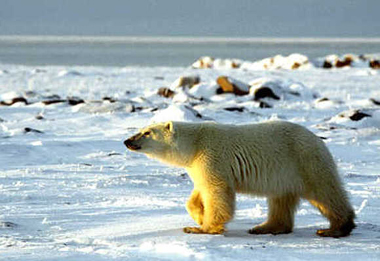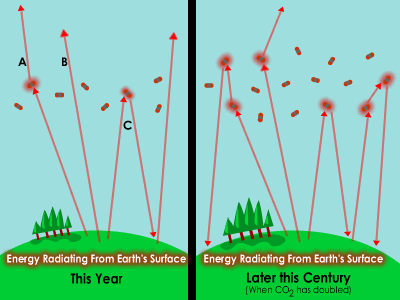The HIAPER research aircraft in flight
Click on image for full size
Courtesy of NCAR/National Science Foundation
Flying from Pole to Pole to Measure Greenhouse Gases
News story originally written on January 7, 2009
An airplane designed for science research is flying from the Arctic to the Antarctic. Along the way it is measuring the amount of heat-trapping carbon dioxide and other greenhouse gases in the atmosphere.
Greenhouse gases are responsible for the greenhouse effect, which traps solar energy in the atmosphere. Most of what we know about the greenhouse gases in our atmosphere is either from measurements made from the ground or measurements made from satellites way above the Earth. Some measurements are made from weather balloons too. But taking so many measurements from an airplane has not been done before. This flight will, for the first time, give scientists real-time global observation data that they can compare with the climate models run on supercomputers.
The plane that will make the trip and collect the data is called HIAPER. It’s a Gulfstream V jet that has been customized for scientific research. Instead of all the seats that fill planes made for transporting people, HIAPER is filled with 5,600 pounds of scientific equipment.
The project, which is called the HIAPER Pole-to-Pole Observations mission (or HIPPO for short) will cover more than 24,000 miles, sampling the atmosphere in some of the most remote regions of the world.
Last modified February 13, 2009 by Lisa Gardiner.
You might also be interested in:

North of the Arctic Circle (at 66.5°N latitude) you will find the Arctic Ocean surrounded by the continents of Europe, Asia, and North America. You will find the geographic North Pole and the magnetic
...more
What Will You Find There? South of the Antarctic Circle (at 66.5°S latitude) you will find the continent of Antarctica surrounded by the Southern Ocean, the geographic South Pole and the magnetic South
...more
Carbon dioxide (CO2) is a kind of gas. There isn't that much carbon dioxide in Earth's atmosphere, but it is still very important. Carbon dioxide is a greenhouse gas. That means it helps trap heat coming
...more
Even though only a tiny amount of the gases in Earth’s atmosphere are greenhouse gases, they have a huge effect on climate. There are several different types of greenhouse gases. The major ones are carbon
...more
Energy from the Sun that makes its way to the Earth’s surface can have trouble finding its way back out to space. This is because of a natural process called the greenhouse effect. Without the greenhouse
...more
Scientists have learned that Mount Hood, Oregon's tallest mountain, has erupted in the past due to the mixing of two different types of magma. "The data will help give us a better road map to what a future
...more
The Earth's mantle is a rocky, solid shell that is between the Earth's crust and the outer core, and makes up about 84 percent of the Earth's volume. The mantle is made up of many distinct portions or
...more















